French aerospace company Thales, in partnership with airline Amelia and Breakthrough Energy Contrails, has released results from what it claims is one of the world’s largest contrail avoidance live trials, and confirms it will expand the initiative in 2025. Thales’ Flights Footprint solution was tested on Amelia’s route between Paris and Valladolid in Spain during the second half of 2024. The aim was to identify flights that could cause contrails at cruise altitude and modify the flight plan to avoid them. Out of 50 flights, five were selected and a lower flight level was chosen, resulting in saving a total of 20 tonnes of CO2 equivalent, and reducing the climate impact of each flight by up to 40%. As the aircraft were flying less optimally, each flight on average consumed up to an additional 3% in fuel. Thales says it expects to roll out the solution to other airlines in time as EU regulatory action on aviation’s non-CO2 climate impact takes effect.
According to Thales, CO2 emissions are responsible for 55% of aviation’s total climate impact, with a further 10% attributed to NOx, leaving contrails accountable for the remaining 35%. “The impact of contrails on the climate is one of the major challenges of the ecological transition in aviation,” said Matteo Mirolo, Head of Strategy at Breakthrough Energy Contrails.
As part of the DECOR research project, with funding from France’s 2030 investment plan, the Thales Flight Footprints contrail avoidance solution was deployed on the Paris-Valladolid route operated by Amelia from June 2024, using Embraer ERJ 145 aircraft. The solution was integrated with Amelia’s Operational Control Center (OCC) tools. Thales enabled OCC operations agents to directly obtain alternative routes to their flight plans.
The solution utilises the latest weather forecasts and advanced climate models provided by Breakthrough Energy Contrails to optimise the flight plan. When a significant impact of contrails is detected, it suggests flight alternatives that would allow for a significant reduction – a minimum average decrease of up to 40%, claims Thales – in the climate impact of the flight. The optimisation relies solely on adjustments to the aircraft’s altitude, without changing its route, so helping to keep additional fuel consumption and CO2 emissions to below 3%, it says.
After each flight, the climate models, coupled with meteorological re-analysis data, were applied to the actual flight path of the aircraft to assess the outcome of avoiding contrail formation areas.
The cruise level of one of the avoidance flights between Valladolid and Paris on 5 June 2024 was lowered from FL-360 (36,000ft) in the initial flight plan to FL-340, a difference of 2,000 feet. Modelling of the initial plan showed a climate impact of 12.6 tonnes CO2eq / Global Warming Potential (GWP) 100, and fuel consumption of 1.81 tonnes. By reducing the cruise altitude, modelling the actual outcome showed the overall climate impact of the flight as 8.8 tonnes CO2eq/GWP100 (-30.2%) against fuel consumption of 1.85 tonnes (+2.4%).
A ground camera supplied by Reuniwatt was located at an observation site along the route in Brach, south-west France, to validate the solution’s effectiveness by looking for contrails from the aircraft, with analysis conducted by digital services company SII Group. Under the initial flight plan, contrails were predicted at this point on the route but, said Thales, no contrails at the aircraft’s lower altitude were detected from the ground.
Out of 50 flights conducted by Amelia on the Valladolid-Paris route – considered a good candidate route by the partners – over the period of the trial, five flights were chosen, based on a range of factors including meteorological conditions, and adjusted for contrail avoidance. This bears out studies that have shown between 5% and 10% of flights generate around 80% of contrails, reports Thales.
“The objective for us now in 2025 is to be able to bring this solution for all eligible flights, not just the Paris-Valladolid route, and extend it to the rest of our network,” said Adrien Chabot, Head of Sustainable Development at Amelia, which has been collaborating with Thales on the solution since 2022. “We will have to take into account that it means taking this into real-life commercial operations and not just as a R&D activity, so we will have to face the normal operational constraints.
“One of the biggest challenges is that there is only a very narrow time window to make a decision as to whether to modify a flight or not. You can’t do it too much in advance of the flight as the weather forecast is not accurate enough, so you want to leave it as long as possible. But if you leave it until too near the time of the take-off of the flight, it may be too late to modify the flight plan and make all the necessary changes. This has been part of the learning process for us over the past six months.
“The challenge is to significantly and quickly reduce our impact on climate change by continuing the deployment of the Thales solution. Today, it is probably one of the most promising approaches in terms of cost/benefit regarding climate impact.”
Julian Lopez, Head of Green Operations at Thales, said all the latest scientific understandings relating to contrails had been adopted into the modelling and the 2025 flights by Amelia would be used to gather more data.
“So far, from what we have seen, the results from our trial are consistent with larger studies done previously that were based on simulations.”
He said at present there were only a limited number of other airlines proactively interested in taking part in contrail avoidance trials involving a large number of flights.
On the contrail avoidance solution, he said: “This is a product that could fit the needs of all airlines in the long run but not until regulation is in place. What we are focused on today is a product that helps airlines with improving their fuel efficiency, since there is regulation for that and there is a commercial interest in saving fuel and CO2, but is not taking into account contrails.
“Flights Footprint will be a product that we hope to sell to airlines when a change in regulation has taken place and airlines have an incentive to reduce their total climate impact. But we are definitely preparing for this eventuality, thanks to what we are doing with Amelia.”
Added Yannick Assouad, EVP Avionics at Thales: “Our contrail avoidance solution is a first for France. It is fully aligned with Thales’ strategy aiming to transform the aerospace industry towards a more environmentally-friendly future through technology for more sustainable and responsible aviation.”
Image: Amelia ERJ 145


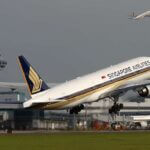
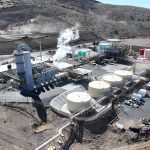
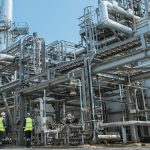
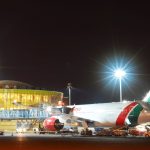
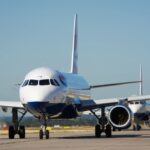
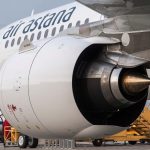

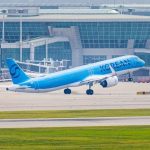





More News & Features
Catagen launches SAF production company and signs offtakes with Ryanair and Shell
Legal analysis finds countries must include aviation non-CO2 emissions in their climate action plans
NATS survey shows a continuing disconnect of public attitudes to the environmental impact of flying
SWISS integrates first supplies of Synhelion solar SAF into flight operations
Aviation and fuel industries call for urgent EU policy action on SAF deployment
Air France-KLM becomes the first airline group to join the new EU flight emissions labelling scheme